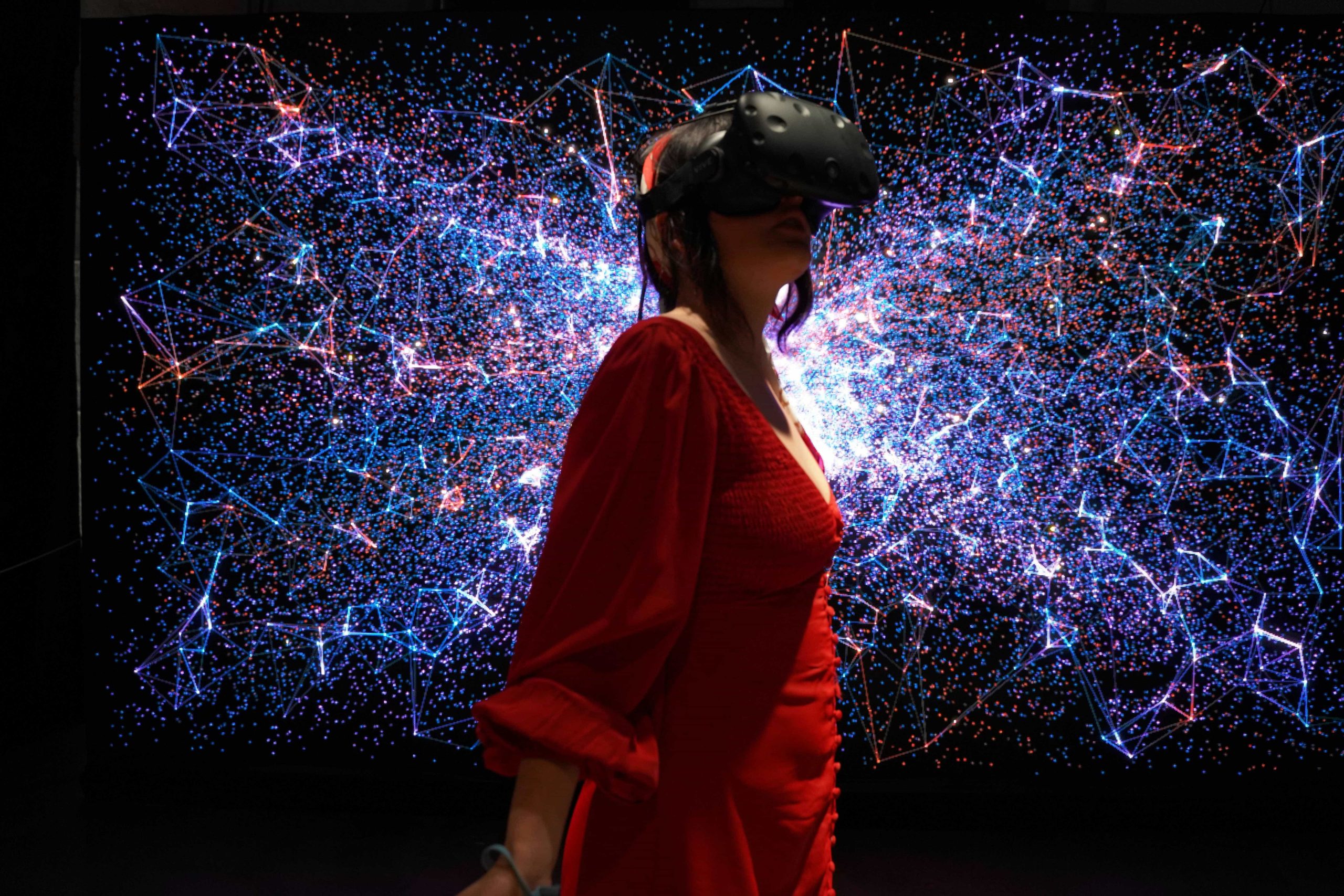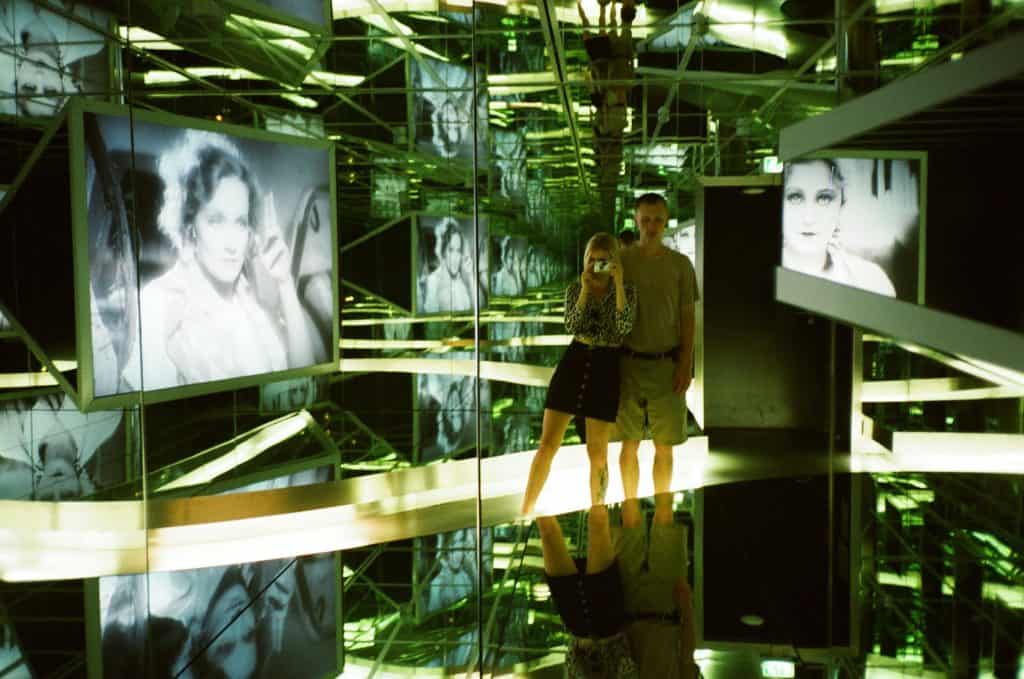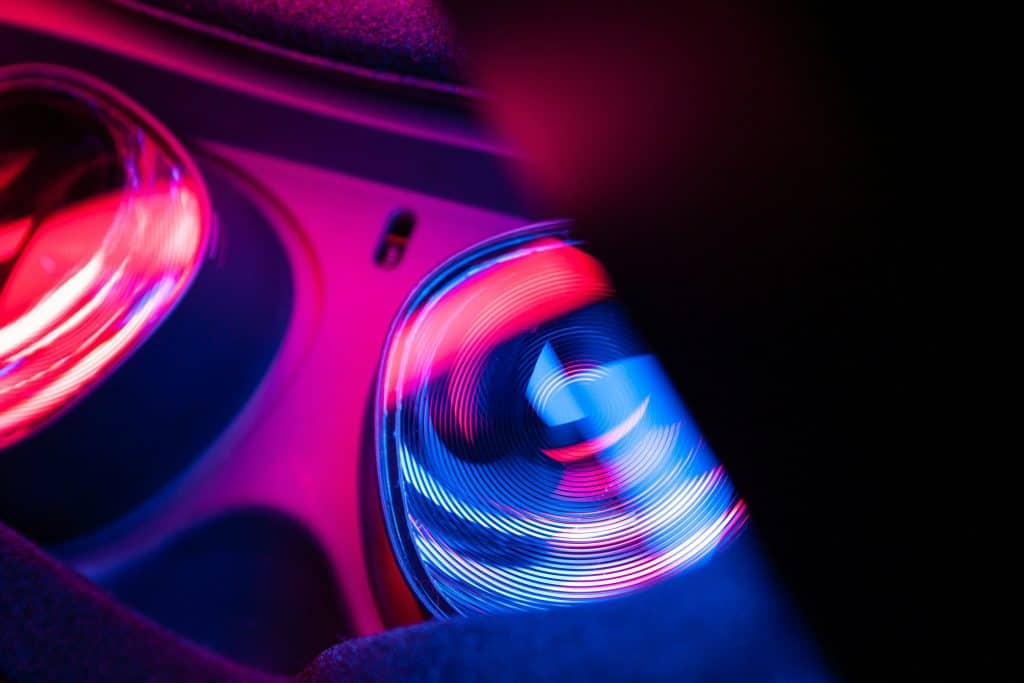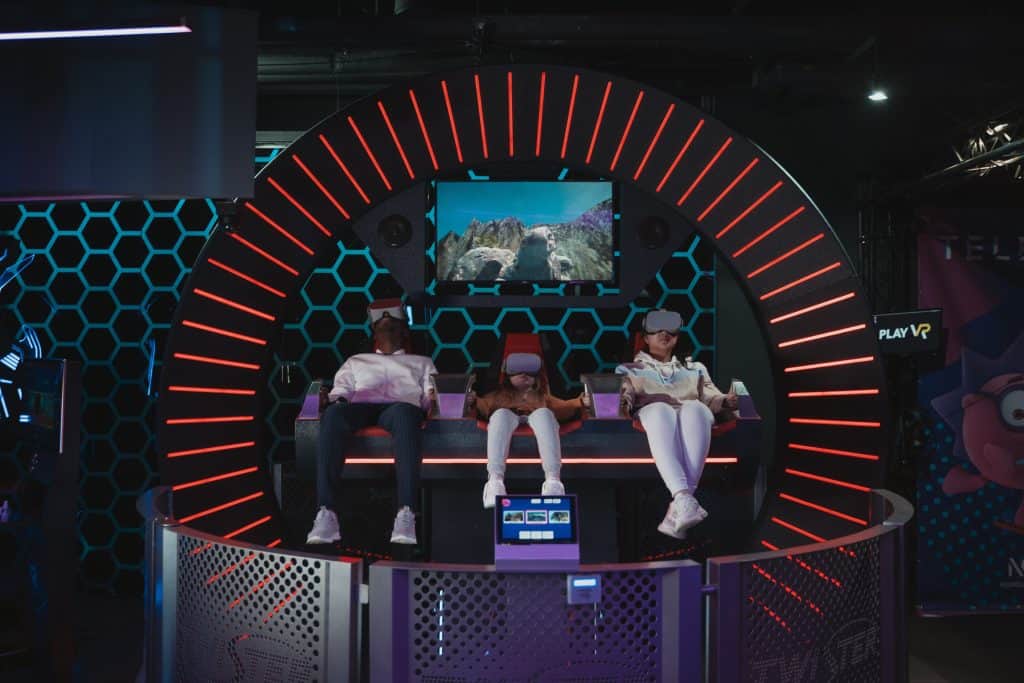
13 Feb Virtual Reality in Art Exhibition
Virtual reality (VR) goes beyond being a technological marvel, serving as an alluring canvas for artistic expression by merging cutting-edge technology with creative ingenuity. This fusion creates a transformative synergy, breaking down the boundaries between the physical and digital realms and offering possibilities beyond traditional art forms. These events act as gateways to alternative realities, pushing the limits of artistic expression. Artists in this uncharted territory use virtual environments to craft captivating and unimaginable experiences, redefining artistic norms with interactive elements that engage viewers on a profound level. This intersection of technology and art invites us to question the essence of creativity and its boundless potential in the digital realm, transforming how we perceive and engage with art in the 21st century.
Benefits of VR Art Exhibitions

Photo by Darya Sannikova
Immersive and Interactive Experiences
VR art exhibitions revolutionize the traditional art-viewing experience by immersing spectators directly into the heart of the artwork. Unlike conventional settings, where observers maintain a distinct separation from the art, virtual reality blurs the line between spectator and participant. Within these virtual environments, viewers find themselves embedded in the fabric of the artwork, allowing them to explore and interact with the various elements at different scales and perspectives. This shift in dynamics introduces an unprecedented layer of play and discovery to the art appreciation process, transforming it into a deeply personal and engaging journey. The immersive quality of VR art exhibitions challenges the traditional passive role of the viewer, fostering a more active and participatory engagement with the artistic creation.
Accessibility and Global Reach
The advent of VR technology in the art world addresses longstanding issues of accessibility and geographic barriers. Virtual reality liberates art from physical constraints, enabling a global audience to access exhibitions from anywhere in the world. This breakthrough diminishes concerns related to the conservation and transportation of physical artworks, as the need for a physical presence is eliminated. The dematerialization of art through VR not only enhances accessibility but also broadens the reach of art to a more diverse and inclusive audience. This newfound accessibility encourages cultural exchange and the sharing of artistic experiences on a global scale, fostering a more interconnected and democratized art community.
Creative Freedom and New Artistic Possibilities
VR provides artists with a powerful tool to break free from the limitations of traditional mediums. Beyond the constraints of canvas or sculpture, virtual reality empowers artists to explore new dimensions and experiment with multisensory elements. By incorporating sound, haptics, and movement, artists can create truly immersive and participatory installations that engage the audience on multiple levels. This expanded palette of artistic tools enriches the narrative potential of the artwork, pushing the boundaries of conventional norms. The result is a transformative and innovative artistic landscape that opens up new realms of creativity, encouraging artists to explore uncharted territories and redefine the possibilities of artistic expression. VR offers a platform for pushing artistic boundaries, fostering a dynamic and ever-evolving relationship between artists and their audiences.
Challenges and Considerations

Photo by James Yarema
Technological Limitations
The promising realm of Virtual Reality (VR) is not without its set of challenges, particularly concerning technological limitations. One significant barrier revolves around the cost and availability of both hardware and software necessary for a seamless VR experience. This raises pertinent questions about accessibility and inclusivity, as not everyone may have the financial means to access the required technology. The need for affordable and widespread VR equipment and applications is essential to ensure that this transformative technology becomes accessible to a broader audience. Additionally, there are concerns related to potential health risks associated with VR usage, such as nausea resulting from prolonged exposure. Addressing these health concerns is crucial to guarantee a positive user experience and to alleviate apprehensions surrounding the adoption of VR technology.
Artistic Challenges
The integration of physical art into a digital VR experience introduces a unique set of artistic challenges. Preserving the original artistic intent and integrity while translating it into an interactive medium requires careful consideration. There is a delicate balance to strike, as the transition to VR should avoid falling into the realm of gimmickry. The aim is to facilitate meaningful engagement with the artwork, ensuring that the immersive experience enhances rather than diminishes the artistic value. Artists and creators must grapple with the task of adapting their craft to a new dimension, considering not only the visual aspects but also the interactive elements that VR brings to the artistic realm.
Shifting the Role of Curator and Artist
VR not only challenges artistic creation but also redefines traditional roles in exhibition spaces and curation. The concept of physical galleries and curatorial roles undergoes a transformation as virtual spaces take center stage. Navigating copyright and ownership issues becomes a critical consideration in the digital landscape, particularly when dealing with digital artworks. The question of how to protect and attribute ownership to VR creations adds a layer of complexity that demands careful legal and ethical navigation. Additionally, the preservation and archiving of VR art experiences present challenges for future generations. As the traditional means of preserving art evolve, the art world must grapple with how to ensure the longevity and accessibility of VR-based creations for posterity. The role of both curator and artist is not only to create but also to navigate these intricate issues, shaping the future of artistic expression in the digital age.

Photo by Tima Miroshnichenko
The Future of VR Art
Envisioning the future, the integration of Virtual Reality (VR) with emerging technologies like Artificial Intelligence (AI) and blockchain holds transformative potential for the art world. This synergy not only reshapes artistic practice but also challenges the traditional structures of art institutions. VR’s capacity to redefine the art experience invites us into a future where the boundaries between reality and the virtual seamlessly blur.
The convergence of VR and AI introduces dynamic elements to artistic creation, enhancing interactivity and personalization within virtual environments. AI algorithms intelligently respond to user interactions, creating evolving and personalized artistic encounters. Simultaneously, the integration of blockchain technology addresses issues of ownership, provenance, and authenticity in the digital art realm. Smart contracts on the blockchain automate and secure transactions, ensuring fair compensation for artists and transparent traceability of digital art assets. As we look ahead, this harmonious fusion of VR, AI, and blockchain propels art into a new era of innovation, challenging traditional norms and fostering a more equitable and accessible landscape for artistic expression.

Photo by Tima Miroshnichenko
Conclusion
Virtual Reality (VR) has ushered in a transformative era in art exhibitions, offering immersive and interactive experiences that redefine traditional boundaries. The benefits are evident in the democratization of art, breaking free from geographical constraints and providing a platform for diverse global audiences. However, challenges such as technological limitations, artistic considerations, and shifts in curatorial roles highlight the need for ongoing refinement.
Examining successful VR art projects across various disciplines demonstrates the adaptability of this technology. Yet, as we envision the future, the integration of VR with emerging technologies like AI and blockchain holds exciting possibilities. This synergy not only transforms artistic practice but also influences the very fabric of traditional art institutions. In this dynamic landscape, the potential of VR to dissolve boundaries between reality and the virtual beckons us towards a future where the canvas of creativity extends beyond physical limitations, inviting both artists and audiences to embark on an ever-evolving exploration of artistic expression.
Key Takeaways
- Immersive Art Experience: Virtual reality blurs the lines between observer and participant, creating an immersive space where art appreciation becomes a personalized journey.
- Global Accessibility: Overcoming geographic barriers, virtual reality democratizes art, ensuring a global audience can access exhibitions beyond physical constraints.
- Creative Freedom: Virtual reality empowers artists to transcend traditional mediums, introducing multisensory elements for interactive installations that redefine the boundaries of creativity.
- Challenges: Virtual reality in art encounters technological hurdles, including concerns about the cost, accessibility of hardware and software, and potential health issues from prolonged usage.
- Future Integration: The integration of virtual reality with emerging technologies like AI and blockchain holds exciting potential, reshaping artistic practices and challenging traditional structures within art institutions.
FAQs
How does VR overcome geographical barriers in art exhibitions?
Virtual Reality (VR) serves as a transformative medium by transcending geographical constraints in art exhibitions. By providing an immersive digital environment, VR enables global access to art shows, liberating audiences from the limitations of physical proximity. This breakthrough technology allows individuals from diverse corners of the world to virtually attend exhibitions, fostering a more inclusive and widespread appreciation of artistic endeavors without the need for physical presence.
What challenges do VR art experiences face in terms of accessibility?
Despite its potential, VR art experiences encounter accessibility challenges rooted in cost and availability. The expense of VR hardware and software creates financial barriers, restricting access for individuals with limited resources. Furthermore, the non-uniform global distribution of VR technology exacerbates these challenges. Accessibility concerns also extend to individuals with disabilities, as virtual environments may not always be optimized for those with visual, auditory, or mobility impairments. Addressing these challenges requires a concerted effort to make VR art experiences more affordable, globally available, and inclusive for a diverse audience.
How does VR impact the role of curators in the art world?
The advent of Virtual Reality has a profound impact on the traditional role of curators in the art world. In virtual environments, curators face a paradigm shift, moving away from the management of physical spaces to curating digital, immersive experiences. VR challenges curators to adapt their skills to navigate new exhibition formats and interactive elements unique to this technological landscape. This evolution demands a deeper understanding of both artistic expression and technological possibilities. Curators must collaborate closely with artists and technologists to ensure that virtual exhibitions effectively convey artistic visions while leveraging the interactive potential of VR, thereby prompting a redefinition of the curator’s role in the digital age.
With the help of this “Art Festivals Focused on Cultural Exchange” guide, you may set off on an international artistic tour that features occasions that act as lively hubs for cross-cultural communication, celebrate a wide range of artistic expressions, and promote intercultural understanding.

